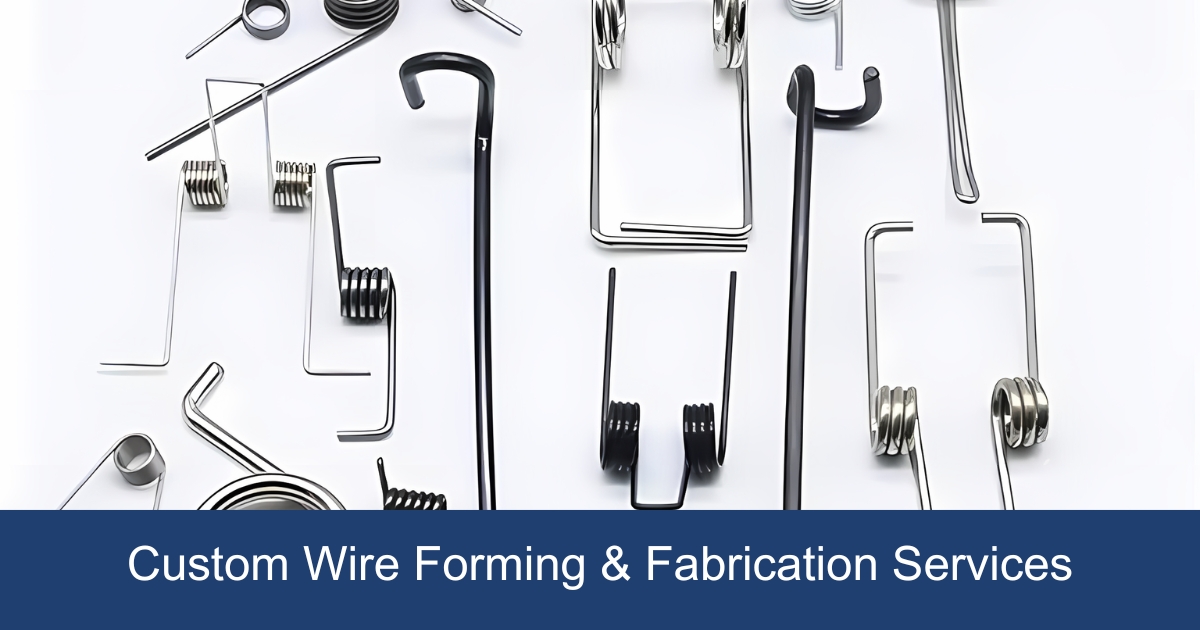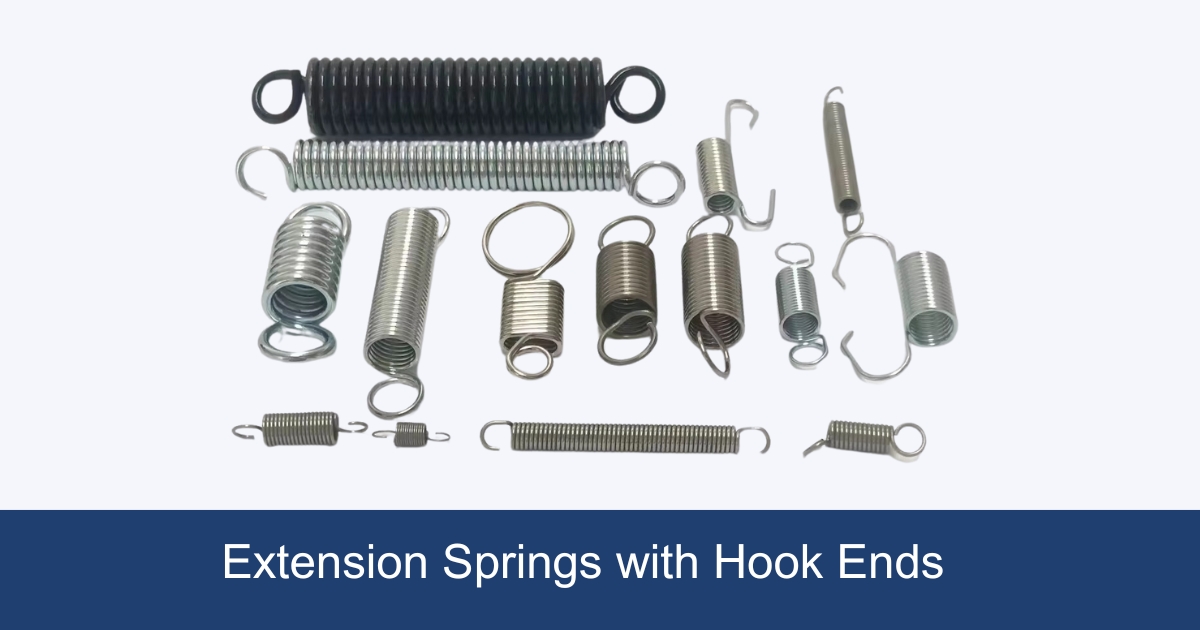Titanium springs, crafted from titanium alloy wire, stand out in the realm of spring manufacturing for their unique combination of lightweight properties and superior strength, distinctly setting them apart from traditional options. These springs, favored for their wear-resistance and ability to perform under cryogenic temperatures, illustrate the advanced capabilities of titanium alloys.
The forthcoming article will delve into the intricate details of titanium springs, contrasting their characteristics with that of steel springs to underscore the benefits they bring to various applications. Discussions will include an in-depth look at the engineering behind these powerful components, customization options for specific needs, and an analysis on cost considerations, including the often pondered cost of titanium vs steel.

What is a titanium spring?
A titanium spring is a mechanical device made from titanium or its alloys, known for its high strength, low density, and exceptional corrosion resistance. These properties make titanium springs highly desirable in applications requiring lightweight components with durable performance and longevity. Titanium springs are commonly used in aerospace, automotive, medical devices, and marine industries, where they can significantly reduce weight without sacrificing strength or reliability. Their resistance to corrosion also makes them suitable for harsh environmental conditions, further broadening their range of applications.
How Long Do Titanium Springs Last?
The lifespan of a titanium spring can vary widely based on its application, design, environment, and usage intensity. Generally, titanium springs are known for their excellent corrosion resistance, high strength-to-weight ratio, and good fatigue resistance, which contribute to a longer lifespan compared to springs made from other materials. In ideal conditions and with proper maintenance, titanium springs can last for decades. However, the specific operational context—such as exposure to extreme temperatures, corrosive substances, or constant high-stress applications—can affect their durability. For precise longevity estimates, it’s essential to consider the spring’s design specifications and the environment in which it will operate.
Key Advantages of Titanium Springs
Exploring the multifaceted advantages of titanium springs reveals a compelling narrative of innovation and efficiency. Below are the key benefits that underscore their superiority over traditional steel springs, each contributing to the growing preference for titanium in various industries.
Weight Savings and Performance Enhancement
- 40% to 60% Lighter: Titanium springs are significantly lighter than steel springs, owing to their lower modulus, density, and higher strength. This weight reduction is pivotal in applications where every ounce matters, such as in aerospace and automotive industries.
- Higher Natural Frequency: The dynamic response of titanium springs is superior, thanks to their higher natural frequency. This translates into enhanced shock performance and wheel control, crucial for high-performance vehicles and machinery.
- Reduced Energy Consumption: With their lighter weight, titanium springs require less energy to move. This not only contributes to energy efficiency but also minimizes wear and tear, extending the lifespan of the components they are used in.
Durability and Environmental Resistance
- Extended Fatigue Life: Titanium springs exhibit remarkable resistance to set and have a longer fatigue life, especially under the stress of performance applications. This durability ensures reliability over time, even in the most demanding conditions.
- Corrosion Resistance: The inherent corrosion resistance of titanium makes these springs ideal for use in harsh environments, including marine, aerospace, and medical applications. This quality extends their usability and reduces the need for frequent replacements.
- Superior Fatigue Resistance: Utilizing high-strength beta titanium alloys further enhances the fatigue resistance of these springs, making them suitable for the extreme demands of applications like Formula 1 suspensions and snowmobile clutch springs.
These advantages collectively make titanium springs not just an alternative to steel but often the preferred choice for applications demanding the best in strength, durability, and performance efficiency. The ongoing innovations in titanium spring manufacturing continue to expand their applications, promising even greater benefits in the future.
Comparing Titanium Springs to Traditional Steel Springs
When comparing titanium springs to traditional steel springs, several key differences emerge that significantly impact their performance, durability, and application suitability. To provide a clearer understanding, let’s explore these differences through a comparative analysis:
Material Properties and Performance
- Elastic Modulus: Titanium springs boast an elastic modulus of 5,350,000 psi (36.9 GPa), contrasting with steel springs’ higher elastic modulus of 250,000 psi (1.72 GPa). This lower modulus for titanium translates to a material that is twice as “springy,” enhancing its ability to return to its original shape under stress.
- Density: The lower density of titanium alloy springs compared to steel springs means that for the same load and spring rate, titanium springs are approximately 60-70% lighter. This weight reduction is crucial in applications where every gram counts, such as aerospace and automotive industries.
- Shear/Rigidity Modulus: Steel springs have a shear modulus approximately twice that of titanium, indicating steel’s higher rigidity. However, this also means steel springs are typically wound tighter, affecting the coil angle change through the stroke and potentially impacting the feel.
Durability and Environmental Resistance
- Corrosion Resistance: Titanium springs are far less susceptible to corrosion than steel springs, making them a superior choice for environments where exposure to corrosive elements is a concern, such as marine or medical applications.
- High-Temperature Performance: Unlike steel springs, titanium springs maintain their performance integrity even in high-temperature environments. This characteristic is particularly beneficial in automotive and aerospace components that are subjected to extreme heat.
Comparing Costs: Titanium springs vs. Steel Springs
- Initial Cost vs. Long-term Benefits: While titanium typically costs five to seven times more than stainless steel, the performance benefits, such as extended fatigue life, corrosion resistance, and weight savings, often negate the higher initial cost. In medical applications, for instance, the durability and biocompatibility of titanium justify its price over the lifespan of the product.
- Weight Savings and Energy Efficiency: The significant weight reduction achieved with titanium springs leads to reduced energy consumption in applications. This efficiency, coupled with the extended lifespan due to less wear and tear, presents a compelling economic argument for choosing titanium despite its higher upfront cost.
Applications of Titanium Springs in Various Industries
Titanium alloy springs have revolutionized various industries with their unparalleled advantages, ranging from automotive to aerospace, and even extending into medical and chemical sectors. Their unique properties, such as lightweight, superior corrosion resistance, and high strength-to-weight ratio, make them an indispensable component in numerous applications.
- Automotive and Racing:
- Engine Valve Springs and Suspension Springs: Key for enhancing performance and fuel efficiency in automobiles.
- Found in High-Performance Vehicles: Formula One cars, racing motorbikes, and modern Ferrari models benefit from the reduced weight and increased durability of titanium springs.
- Automotive Suspension Systems: The integration of titanium springs leads to significant weight savings, contributing to improved fuel efficiency and vehicle performance.
- Aerospace and Military:
- Commercial Planes and Military Aviation: Employed in airplane controls and landing gear due to their strength and ability to maintain performance integrity under extreme conditions.
- Critical Applications: Titanium springs are chosen for their reliability in essential aerospace components, ensuring safety and efficiency in both commercial and military aircraft.
- Medical and Industrial:
- Implantable Medical Devices: Titanium’s biocompatibility makes it a preferred choice for medical applications, where its performance benefits often outweigh the higher initial cost.
- Petrochemical and Mining Sectors: The compact size, light weight, and exceptional fatigue resistance of titanium springs will see them being increasingly used in these industries for their durability and efficiency.
- Custom Applications: From valves in the ocean depths to lamp posts and construction projects, custom titanium springs are essential for the success of products across various sectors.
This broad spectrum of applications underscores the versatility and indispensability of titanium springs across industries. Their adoption not only signifies a shift towards more efficient and durable components but also highlights the ongoing innovation in material science that continues to open new avenues for their use.
Design Consideration for Titanium Spring
The geometry of a titanium spring plays a crucial role in its performance and functionality. Designing the geometry involves several key parameters that need to be meticulously calculated and optimized based on the spring’s intended application. Here’s an overview of the primary geometric aspects of titanium springs:
- Wire Diameter (d): The thickness of the spring wire directly influences the spring’s strength and flexibility. A larger wire diameter increases the spring’s overall strength but decreases its flexibility.
- Outer Diameter (OD) and Inner Diameter (ID): These dimensions define the overall size of the spring coil. The outer diameter is critical for ensuring the spring fits within the allocated space in an assembly, while the inner diameter must accommodate any mandrels or shafts without interference.
- Coil Diameter (D): Often considered the mean diameter, it’s calculated as the average of the outer and inner diameters. The coil diameter affects the spring’s rate and torsional stiffness, with larger diameters generally resulting in softer springs.
- Number of Coils (N): This parameter affects the spring’s flexibility and load capacity. Increasing the number of coils can decrease the spring rate, making the spring softer under load, while reducing the number of coils makes the spring stiffer.
- Free Length (L): The overall length of the spring when it is not under any load. The free length is important for determining how much the spring can be compressed or extended during operation.
- Spring Rate (k): This is a measure of the spring’s stiffness, defined as the load per unit of deflection (e.g., N/mm or lbs/in). The spring rate is influenced by the wire diameter, coil diameter, and number of coils, and it is a critical factor in how the spring will perform under load.
- Pitch (P): The distance between the centers of two adjacent coils. In a compressed spring, the pitch helps to prevent coils from touching at maximum compression.
- End Configuration: The shape and design of the spring’s ends affect how it mounts and interacts with other components. Common end types include closed (and ground), open, squared, or hooked.
In designing titanium springs, engineers must consider the unique properties of titanium, such as its high strength and low modulus of elasticity, to optimize these geometric parameters. The goal is to create a spring that meets the specific requirements for force, deflection, space constraints, and durability, taking advantage of titanium’s benefits to enhance the performance and longevity of the spring in its application.
Customizing Titanium Springs for Specific Needs
Customizing titanium springs for specific applications involves a meticulous process that tailors every aspect of the spring to meet precise operational requirements. This customization process encompasses several key factors:
- Physical Dimensions and Mechanical Properties:
- Springs are designed with exact physical dimensions to fit into the designated spaces within machinery or equipment.
- Mechanical properties such as tensile strength, elasticity, and potential energy storage capacity are tailored to ensure optimal performance under specific operational conditions.
- Corrosion Resistance and High-Temperature Applications:
- For environments prone to corrosion or high temperatures, titanium springs are engineered to withstand these harsh conditions without degrading, ensuring long-term reliability and functionality.
- End Shapes and Secondary Operations:
- End shapes of springs, crucial for the connection points in applications, can be customized to various forms such as tapered, hooked, or looped ends.
- Secondary operations like shot peening enhance fatigue resistance, while liquid penetrant inspection ensures the structural integrity of the spring.
Custom titanium springs are not a one-size-fits-all solution but are developed to meet specific load and deflection specifications. This involves:
- Designing for Load and Deflection:
- Springs are manufactured to handle a predetermined force at a defined length or to provide a specific force over a defined range of deflection, ensuring they perform as required in their application.
- Shapes and End Configurations:
- Available in multiple shapes (cylindrical, conical, tapered, convex, or concave) and with different pitch types (constant or variable), allowing for versatile application across industries.
- End configurations can be tailored (closed and ground, closed and unground, open and ground, or open and unground) to fit the assembly needs.
To ensure the customized titanium springs meet the highest standards of quality and performance, rigorous testing is conducted:
- Testing for Performance and Durability:
- Tension testing, fatigue testing, and performance testing in simulated application environments are crucial steps to validate the spring’s suitability for its intended use.
- These tests help in identifying potential issues such as overloading, corrosion, fatigue, loss of tension, and breakage, allowing for adjustments before final production.
Collaboration with a spring engineer is essential in this process. They provide invaluable insight into material and component specifications that optimize performance. By reviewing these specifications, engineers ensure that the custom titanium springs not only meet but exceed the expectations for their application. This collaborative approach between designers and engineers is pivotal in creating springs that offer unmatched performance, durability, and application-specific customization.
Conclusion
Titanium springs outperform steel in strength, durability, and weight, offering long-term benefits despite higher initial costs. Innovations in alloys and manufacturing are making them more accessible, marking a shift towards superior materials that advance industry standards and technology.
FAQs
Can titanium be used for springs?
Yes, titanium can be used for springs. Titanium and its alloys are highly valued in spring manufacturing due to their excellent properties, such as high strength-to-weight ratio, exceptional corrosion resistance, good fatigue life, and non-magnetic nature. These attributes make titanium springs ideal for applications requiring lightweight components with strong, durable performance in harsh or corrosive environments.
Are Titanium Springs Effective?
Titanium springs are highly effective due to their unique advantages. Their lighter weight and lower density compared to steel springs mean they have a smaller mass, which requires less energy for acceleration and deceleration during movement. This makes them an efficient choice for various applications.
Which Titanium Grade is Ideal for Springs?
For springs, high strength is a crucial performance criterion. High-strength beta titanium alloys, such as Ti-3Al-8V-6Cr-4Mo-4Zr and the Timetal LCB (Ti-6.8Mo-4.5Fe-1.5Al) alloy, are considered the best materials for constructing springs due to their exceptional strength and durability.
What is the Operating Temperature Range for Titanium Springs?
Titanium Valve Springs are designed to operate within a temperature range of 1100 to 1300 degrees Fahrenheit. This tempering condition ensures their durability and performance under various operating conditions.



